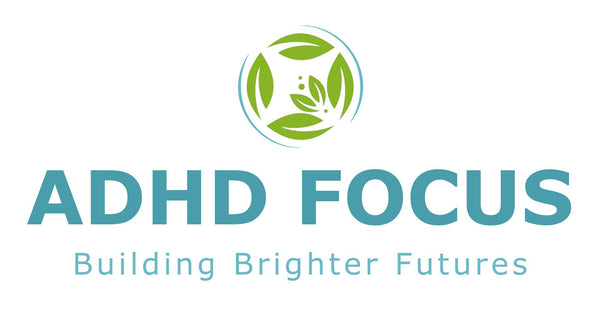
ADHD vs. Normal Childhood Behaviour: The Differences
Share
As a parent or caregiver, it’s natural to wonder: Is my child just energetic and curious — or could it be something more? With more awareness around ADHD (Attention-Deficit/Hyperactivity Disorder), distinguishing between typical childhood behaviour and true ADHD symptoms has become an increasingly common concern.
In this guide, we explore the key differences between ADHD and normal childhood behaviour, how to recognise red flags, and when it might be time to seek professional support.

Quick Overview: What Is ADHD?
ADHD is a neurodevelopmental disorder that affects a child’s ability to regulate attention, impulses, and energy levels. It often appears in early childhood and can impact school performance, social interactions, and emotional wellbeing if not properly managed.
ADHD symptoms typically fall into three categories:
- Inattentive type: Difficulty focusing, forgetfulness, distractibility
- Hyperactive-impulsive type: Fidgeting, excessive talking, impulsive actions
- Combined type: A mix of inattentive and hyperactive traits
ADHD vs. Typical Childhood Behaviour: What’s the Difference?
It’s completely normal for children to be noisy, restless, or daydreamy at times. But ADHD is different. It’s persistent, disruptive, and out of proportion to what’s expected for the child’s age.
Here’s how to tell the difference:
1. Consistency vs. Context
Typical behaviour:
Your child is easily distracted sometimes — especially when tired, bored, or overstimulated.
ADHD:
The distractibility happens all the time, across multiple environments (home, school, outings), and disrupts daily functioning.
2. Energy Levels
Typical behaviour:
Children have bursts of energy but settle when needed — like during storytime or at bedtime.
ADHD:
The energy is constant, often excessive, and difficult to redirect. The child may fidget, squirm, or talk nonstop, even in calm settings.
3. Impulsivity
Typical behaviour:
Occasional interruptions or emotional outbursts are common during developmental stages.
ADHD:
The child frequently interrupts, speaks out of turn, or acts without thinking — to a point that it impacts friendships, learning, and safety.
4. Focus and Attention Span
Typical behaviour:
Children may lose interest quickly if a task isn’t stimulating.
ADHD:
Even tasks they enjoy are hard to finish. They may zone out, jump between activities, or need constant redirection.
5. Emotional Regulation
Typical behaviour:
Kids get cranky or moody but bounce back with reassurance or a change of scenery.
ADHD:
There may be frequent meltdowns, difficulty calming down, and emotional responses that seem outsized for the situation.
When to Consider a Professional Assessment
According to current ADHD diagnostic guidelines (DSM-5 and ICD-11), symptoms must:
- Be present before age 12
- Last for at least 6 months
- Appear in two or more settings (e.g., home and school)
- Clearly impact social, academic, or emotional functioning
If you’re noticing consistent struggles that don’t align with developmental expectations, it may be time to consult a paediatrician, educational psychologist, or behavioural therapist.
Natural Support Tools and Strategies for ADHD
Whether your child has been diagnosed or you're still observing patterns, early support can make a big difference. Some holistic strategies include:
- Structured routines and visual schedules
- Physical activity breaks to channel energy
- Natural supplements (like Focus & Calm and BrightSpark from Feelgood Health)
- Limiting processed sugar and artificial additives
- Calming tools like weighted blankets, nature time, and mindfulness games
Explore Feelgood Health’s range of natural ADHD support remedies formulated to support concentration, emotional balance, and calmer behaviour.
Final Thoughts
All children have moments of distraction, energy, and defiance — it’s part of growing up. But when those traits are persistent, intense, and disruptive, they may be signs of ADHD.
Knowing the difference empowers you to take early action, provide support, and help your child thrive — whether through behavioural tools, natural supplements, or professional care.
Featured Products:
Related Articles:
- Are ADHD Children Neurodivergent?
-
The Role of Omega-3 Fatty Acids in ADHD Management
- What is ADHD Burnout in Children?
If you have any question, please contact us or leave a comment below for FREE health advice. We always love hearing from you!

